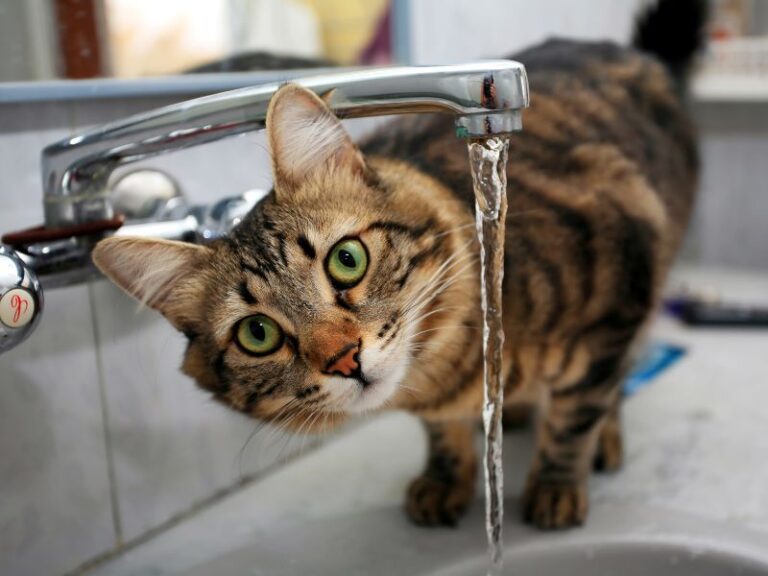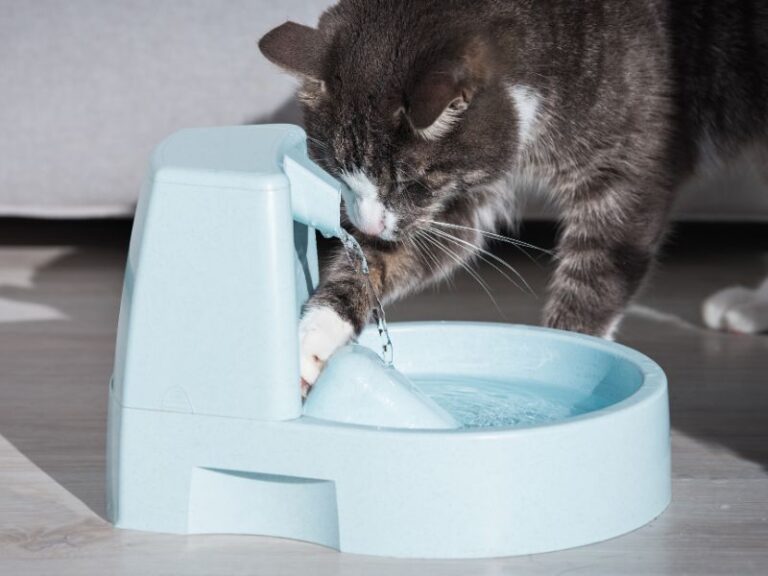Table of Contents
ToggleCats are wonderful companions, bringing joy and warmth to our homes with their playful antics and soothing purrs. However, one behavior that can leave us flustered is their tendency to scratch furniture. If you’ve ever cringed at the sight of your beloved feline leaving their mark on your cherished sofa or chair, you’re not alone. The good news is that understanding why cats scratch and implementing effective strategies can help you preserve your furniture while keeping your furry friend content. In this guide, we’ll delve into the intriguing world of cat scratching, exploring both the reasons behind this behavior and practical steps you can take to redirect their instincts in a positive way. So, let’s embark on a journey to harmoniously coexist with our cats without sacrificing our sofas in the process.
Understanding Why Cats Scratch
Cats’ scratching behavior, seemingly perplexing to us, is deeply ingrained in their nature. Beneath those cute paws lies an innate instinct that serves several vital purposes in their lives. Scratching, for cats, is more than just a random habit; it’s a form of communication and self-care that traces back to their wild ancestors.
Marking Territory and Communicating
When your cat rhythmically rakes their claws against various surfaces, they’re not merely aiming to annoy you. Scratching serves as a visual and olfactory declaration of territory. In the wild, cats would mark trees, rocks, and other objects in their environment, leaving both visible scratch marks and scent cues from their paws’ sweat glands. In our homes, that plush armchair becomes the modern-day equivalent of a tree trunk, marked with their distinctive scent to signal ownership.
Maintaining Claws and Stretching Muscles
While the territorial aspect is intriguing, scratching also plays a crucial role in maintaining a cat’s health. Cats’ claws continuously grow, and scratching helps them shed the outer layers of their claws, preventing overgrowth and ensuring they remain sharp and functional. Additionally, scratching is akin to a full-body stretch for cats. It allows them to flex their muscles and extend their bodies, promoting suppleness and overall physical well-being.

The Damage Caused by Cat Scratching
While we adore our feline companions, the havoc their scratching can wreak on our furniture and surroundings can be exasperating. From frayed upholstery to scratched wood, it sometimes feels like a battle between aesthetics and our cats’ primal instincts. However, understanding the extent of the damage is key to finding effective solutions that maintain both our homes and our furry friends’ well-being.
Furniture Wear and Tear
Cats’ claws are natural tools, designed for hunting, climbing, and yes, scratching. Unfortunately, that means they can leave behind visible reminders of their activities on our sofas, chairs, and tables. Fabric upholstery often bears the brunt, with threads getting caught and pulled, leading to unsightly snags and tears. Wooden furniture isn’t spared either; scratches can mar the surface and tarnish the overall appearance.
The Importance of Addressing the Behavior
While it might be tempting to suppress this scratching behavior altogether, it’s essential to recognize that scratching is more than a mere whim—it’s a part of your cat’s identity and well-being. Trying to eliminate scratching entirely can lead to frustration and even stress in your cat. The goal should be to redirect their instincts to more appropriate outlets rather than stifling their natural inclinations.
Finding the balance between nurturing your cat’s natural behaviors and maintaining an aesthetically pleasing living space is possible. In the upcoming sections, we’ll explore proactive measures you can take to create a harmonious environment that accommodates both your cat’s needs and your furniture’s longevity. After all, a well-informed approach is the first step toward peacefully cohabiting with your four-legged companion.

Providing Proper Scratching Outlets
As we embark on our mission to preserve our furniture while catering to our cats’ instincts, one of the most effective strategies is to offer them suitable alternatives for scratching. Enter the world of scratching posts and pads, which not only divert your cat’s attention from your beloved couch but also fulfill their intrinsic need to scratch.
Releavnt >>How To Build A DIY Cat Scratching Post
The Concept of Scratching Posts and Pads:
Scratching posts and pads are purpose-built havens for your cat’s scratching tendencies. These items are designed to withstand the vigor of clawing while offering an enticing surface that mirrors the textures and sensations cats naturally seek out. By introducing these alternatives, you’re not just curbing unwanted behavior but also enhancing your cat’s physical and mental well-being.
Materials and Designs that Speak to Cats:
When choosing a scratching post or pad, consider the materials and designs that are most appealing to your cat. Sisal, a natural fiber, is a popular choice for its durability and satisfying texture. Cardboard scratching pads are also favored by many cats for their crinkly texture. Vertical posts, horizontal pads, and even multi-level structures can cater to different scratching preferences.
Strategic Placement for Maximum Impact:
Placing scratching posts strategically is key to their effectiveness. Position them near the furniture your cat tends to target, creating a natural transition from the undesirable surface to the designated scratching area. Additionally, placing posts near windows or in areas where your cat likes to lounge encourages their use. Remember, cats often scratch after waking up, so locating a scratching post near their favorite nap spot can be advantageous.
By thoughtfully introducing scratching posts and pads into your living space, you’re not only safeguarding your furniture but also fostering an environment that supports your cat’s natural instincts. In the upcoming sections, we’ll delve into techniques that discourage cats from viewing your furniture as scratching playgrounds, ensuring a harmonious coexistence between your decor and your feline friend.

Making Furniture Less Appealing:
While providing scratching alternatives is essential, sometimes a two-pronged approach is necessary to truly deter your cat from considering your furniture as their personal scratching post. Let’s explore some clever techniques that can make your furniture far less appealing, without resorting to harm or stress.
Utilizing Double-Sided Tape, Aluminum Foil, and Fabric Softeners:
Cats have sensitive paws, and certain textures can be quite off-putting to them. Applying double-sided tape to furniture surfaces or draping aluminum foil can create a tactile deterrent that discourages scratching. Alternatively, some cats are put off by the scent of fabric softeners, making them effective in keeping curious paws at bay. Be sure to test these methods on inconspicuous areas first to avoid damaging your furniture.
Rearranging Furniture for a Fresh Perspective:
Cats are creatures of habit, and they often scratch familiar spots out of routine. By rearranging your furniture periodically, you disrupt their established scratching patterns. This encourages them to explore new areas and, ideally, focus their attention on scratching posts and pads. This technique is not only effective in protecting your furniture but also in enriching your cat’s environment.
Positive Reinforcement and Training
When it comes to modifying your cat’s behavior, a gentle and positive approach often yields the best results. Positive reinforcement, a time-tested training technique, can play a significant role in redirecting your cat’s scratching instincts toward more appropriate outlets. By understanding the power of positive reinforcement and incorporating it into your interactions with your cat, you can foster lasting behavioral changes.
The Power of Positive Reinforcement:
Positive reinforcement involves rewarding desired behaviors to encourage their repetition. When your cat uses a scratching post instead of the furniture, lavish them with praise, treats, or affection. This positive association strengthens the connection between scratching posts and positive outcomes, making them more appealing to your cat.
Personal Experiences and Success Stories:
In my own journey with cats, I’ve witnessed firsthand the transformative effects of positive reinforcement. By celebrating small victories and consistently rewarding appropriate behaviors, cats can quickly grasp the correlation between their actions and positive outcomes. One heartwarming story involves a persistent furniture-scratcher turned avid scratching post user, all thanks to a consistent regimen of treats and affection.
Clicker Training and Reward-Based Methods:
Clicker training, a technique borrowed from the world of dog training, can be effective with cats as well. The clicker serves as a distinct sound marker, signaling to your cat that they’ve performed a desired behavior. Combined with treats or affection, this method accelerates the learning process. Additionally, integrating reward-based methods into play sessions can strengthen the bond between you and your cat while promoting good behavior.

Trimming and Maintaining Claws
Caring for your cat’s claws is an essential aspect of ensuring their well-being and reducing the impact of scratching. Regular claw maintenance not only keeps your cat comfortable but also minimizes the potential damage they can inflict on your furniture. Here’s a comprehensive guide on how to trim your cat’s claws safely and effectively:
Insights into Regular Claw Maintenance: Cats’ claws naturally shed layers, but indoor cats often require assistance in keeping them at a manageable length. Overgrown claws can become painful for your cat and inadvertently cause more damage when they scratch. Regular maintenance also prevents the likelihood of claws getting caught in fabric or causing injuries during play.
Step-by-Step Claw Trimming:
- Gather Supplies: Acquire specialized cat claw clippers or human nail clippers with a straight edge. Have styptic powder or cornstarch on hand in case of accidental bleeding.
- Choose a Comfortable Spot: Find a quiet and comfortable space for the trimming session. Your cat should be relaxed and familiar with the area.
- Familiarize Your Cat: Gently handle your cat’s paws regularly to get them accustomed to the sensation before attempting a full trim.
- Examine Claws: Identify the transparent area called the quick, which contains blood vessels and nerves. Avoid cutting into the quick to prevent bleeding.
- Trim Gradually: Trim one claw at a time, using steady pressure to cut a small portion. Focus on the translucent tips and avoid the quick.
- Offer Treats and Praise: Reward your cat with treats and gentle praise after each successful trimming session to create positive associations.
Consulting a Veterinarian for Guidance: If you’re apprehensive about trimming your cat’s claws or if your cat’s claws are particularly long, seeking guidance from a veterinarian is a prudent option. Veterinarians or professional groomers can provide hands-on demonstrations and ensure the process is stress-free for both you and your cat. Remember, prioritizing your cat’s comfort and safety is paramount, and professional assistance is always available if needed.
Using Cat-Friendly Furniture
In our quest to coexist peacefully with our feline friends, embracing cat-friendly furniture can be a game-changer. These specialized pieces not only satisfy your cat’s scratching instincts but also seamlessly integrate into your home décor. Let’s explore some enticing options and reputable brands that cater to both your cat’s needs and your aesthetic preferences:
Introducing Furniture Designed for Scratching:
- Scratching Posts with Style: Modern scratching posts come in various designs, from sleek vertical posts to multi-level structures that double as play areas.
- Scratchable Surfaces: Furniture pieces with integrated scratchable surfaces, like couches with textured arms, offer a sophisticated solution that satisfies your cat’s urge to scratch.
- Cat Trees and Condos: These multifunctional pieces provide scratching surfaces, cozy hideaways, and elevated perches, all in one stylish package.
Reputable Brands and Products:
- Frisco: Known for their diverse range of scratching posts, cat trees, and condos, Frisco offers options to fit different spaces and preferences.
- PetFusion: With a focus on combining functionality and aesthetics, PetFusion provides elegant scratcher lounges and scratching posts.
- Catit: Catit’s furniture line includes innovative designs that encourage play, scratching, and relaxation, ensuring your cat’s needs are met.
To explore these options further, consider visiting the official websites of these brands or reputable pet supply retailers. Incorporating cat-friendly furniture not only enhances your home’s interior but also provides your cat with an enriching environment that satisfies their natural instincts.

Consulting a Veterinarian or Behaviorist
When it comes to addressing severe scratching issues, seeking professional guidance is a crucial step. While our previous sections have focused on proactive measures and positive reinforcement, some situations may require the expertise of a veterinarian or a certified animal behaviorist. Here’s why and when to consider reaching out to these professionals:
Emphasizing Professional Advice for Severe Scratching:
- Persistent Behavioral Problems: If your cat’s scratching behavior remains resistant to your efforts or escalates despite your interventions, consulting a professional can offer fresh insights and strategies.
- Expert Assessment: A veterinarian or behaviorist can assess your cat’s behavior comprehensively, considering medical factors, environmental influences, and potential stressors.
- Customized Solutions: Professionals can tailor advice to your cat’s unique needs, providing you with a personalized plan for curbing unwanted scratching.
Potential Underlying Medical Causes for Excessive Scratching:
- Health Issues: Sometimes, excessive scratching can be a sign of an underlying medical problem such as allergies, skin infections, or parasites.
- Pain or Discomfort: Cats may scratch excessively to alleviate pain or discomfort, indicating an underlying health issue that requires medical attention.
- Stress and Anxiety: Behavioral issues, including excessive scratching, can also be rooted in stress, anxiety, or changes in your cat’s environment.
Remember that your cat’s well-being is of utmost importance, and professionals are equipped to provide a comprehensive approach that addresses both behavioral and medical aspects. By seeking their guidance, you’re taking proactive steps to ensure your cat’s health and happiness, while also fostering a more harmonious coexistence within your home.

Final Words
In the journey to coexist harmoniously with our cherished feline companions, we’ve delved into the enigmatic realm of cat scratching, understanding its instinctual significance and learning how to redirect this behavior. Through providing designated scratching outlets, making furniture less enticing, and employing positive reinforcement methods, we’ve navigated a path that upholds both our homes’ aesthetics and our cats’ contentment. Yet, acknowledging the complexities that may arise, we’ve emphasized the invaluable role of professionals—veterinarians and behaviorists—in addressing severe scratching issues, considering potential medical factors and tailoring solutions. As we conclude this exploration, let’s embrace the prospect of a shared future where our spaces effortlessly accommodate our cats’ natural tendencies, solidifying a connection built on empathy, patience, and a well-balanced coexistence.






